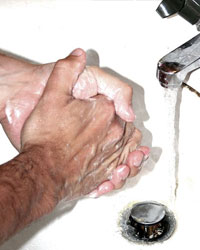 Definition
Definition
This module will help you to:
According to the American Psychiatric Association (2013), compulsive behaviours are actions that are a misdirected attempt to ease one’s obsessive thoughts or one’s enduring feelings of anxiety or discomfort. When performed in moderation, most of these behaviours are considered to be a part of normal life. However, when they are performed in excess, they begin to cause problems for the person engaging in them. According to Fong (2006) it is difficult to clearly define just when a compulsive behaviour becomes a problem. Common compulsive behaviours include disordered eating, excessive exercise, excessive hand washing, problem gambling, problem shopping, self-mutilation (including chronic skin picking and pulling out one’s hair), excessive Internet use and gaming, hoarding, compulsively pursuing sex, excessive viewing of pornography, and even having an obsessive fixation on schoolwork.
These conditions, while often hidden, are not rare. Sulkowski, Mariaskin, and Storch (2011) found that 3 – 7% of college students display obsessive-compulsive symptomology.Research conducted by Guidi et al. (2009) found that among female students in a university setting, 7.2% suffered from compulsive eating, and another 18.1% engaged in exercise compulsively. According to Young (n.d.), college and university campuses are fertile places for students to develop excessive patterns of computer use. McComb and Hanson (2009) note that college students are 2 to 3 times more likely than other adults to develop gambling problems and Nowak and Aloe (2014) observed that 1 in 10 postsecondary students will develop a severe gambling problem.